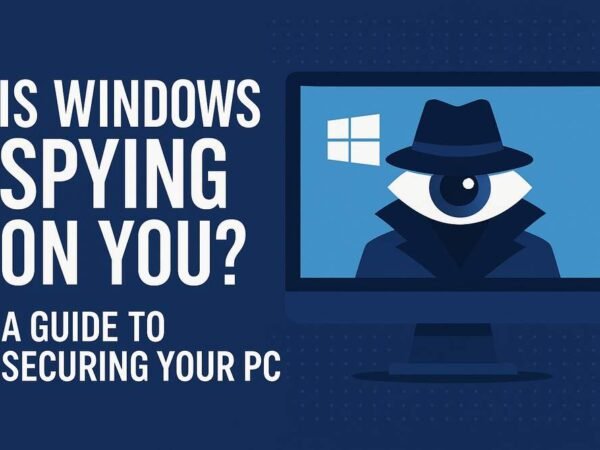Video consumption has become a central part of our online experience, with video sites dominating the digital landscape. From educational platforms to entertainment hubs and social media giants, video content drives engagement, retention, and revenue. A core component that powers these platforms is the streaming video player, a tool responsible for delivering smooth, high-quality playback to users across devices and networks.
In this article, we delve into the importance of streaming video players for video sites and how they contribute to creating a seamless and engaging user experience.
The Evolution of Video Sites
Video sites have come a long way since the early days of online video sharing. Today, they serve various purposes, including:
- Entertainment Platforms: Sites like YouTube, Vimeo, and Dailymotion host vast libraries of entertainment content.
- Educational Portals: Platforms like Udemy and Coursera use video to deliver learning experiences.
- E-Commerce: Retailers integrate video content to showcase products and increase conversions.
- Corporate Training: Businesses use video sites to train employees or onboard customers.
As user expectations for high-quality video experiences grow, video sites must adopt advanced technologies to remain competitive.
Why a Streaming Video Player Is Essential for Video Sites
A streaming video player is a software that enables playback of video content on a website or app. Beyond simply playing a file, modern streaming players provide features designed to enhance quality, compatibility, and user engagement.
Key Features of a Streaming Video Player
- Adaptive Streaming: Video players use protocols like HLS (HTTP Live Streaming) or MPEG-DASH to deliver adaptive bitrate streaming. This ensures smooth playback by automatically adjusting video quality based on the user’s internet connection.
- Cross-Device Compatibility: A robust streaming video player works seamlessly across desktops, smartphones, tablets, and smart TVs. This versatility is crucial for video sites catering to diverse audiences.
- Customizability: Video players can be customized to match a platform’s branding, offering a cohesive and professional look. Customizations can include colors, logos, and even interactive overlays.
- Analytics Integration: Many players come with built-in analytics tools, enabling site owners to track user engagement, watch time, and drop-off points. These insights help optimize content strategies.
- Content Security: Streaming video players often integrate with DRM (Digital Rights Management) tools to protect video content from unauthorized access and piracy.
- User Controls: Features like subtitles, playback speed adjustments, and resolution settings give users control over their viewing experience.
How Streaming Video Players Transform Video Sites
Improved User Experience
A streaming video player ensures that videos load quickly, adapt to different bandwidths, and play seamlessly across devices. This reduces frustration and enhances user satisfaction.
Increased Engagement
With features like interactive overlays, call-to-action buttons, and recommendations, modern players encourage viewers to interact with content rather than passively watch.
Better Monetization
Monetization options like pre-roll ads, mid-roll ads, and sponsorship integrations are often built directly into streaming video players. These features help video sites maximize revenue.
Scalability
As video sites grow, their streaming video player can scale to handle increased traffic without compromising quality. Cloud-based players, in particular, offer flexible solutions for high-demand periods.
Selecting the Right Streaming Video Player for Your Video Site
When choosing a streaming video player, consider the following factors:
- Compatibility with Your Platform: Ensure the player integrates smoothly with your site’s existing infrastructure, including your CMS, video hosting service, and DRM system.
- Streaming Protocols: Look for support for adaptive streaming protocols like HLS or MPEG-DASH to ensure high-quality playback.
- Customizability: Choose a player that allows branding and feature customization to match your site’s identity and user needs.
- Security Features: A player with DRM integration, screen recording prevention, and watermarking capabilities can help protect your intellectual property.
- Ease of Use: The player should have an intuitive interface for end-users and administrators managing content.
Popular Streaming Video Players for Video Sites
-
Video.js
- Open-source and highly customizable
- Supports multiple plugins and adaptive streaming protocols
-
JW Player
- Offers advanced analytics, DRM support, and advertising integrations
- Designed for scalability and performance
-
Plyr
- Lightweight and easy to use
- Focuses on simplicity without sacrificing core functionality
-
Shaka Player
- Built for advanced streaming needs, including DRM and adaptive streaming
- Open-source and well-supported by a developer community
Conclusion
A powerful streaming video player is at the heart of any successful video site. It ensures smooth and high-quality playback and provides the tools needed for engagement, monetization, and security. As user expectations continue to rise, investing in a robust player can transform a video site into a dynamic, user-friendly platform.
Whether you’re building an educational portal, entertainment hub, or corporate video site, the right streaming video player will enhance your site’s capabilities and keep your audience coming back for more.
Do Read: Strategies for Effective and Engaging Website Design













